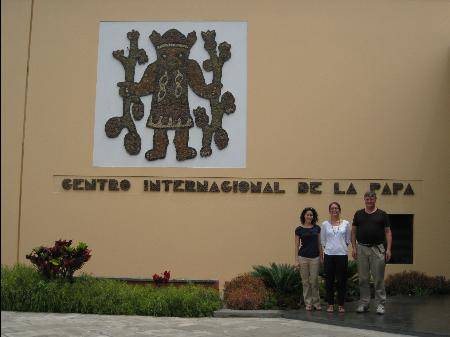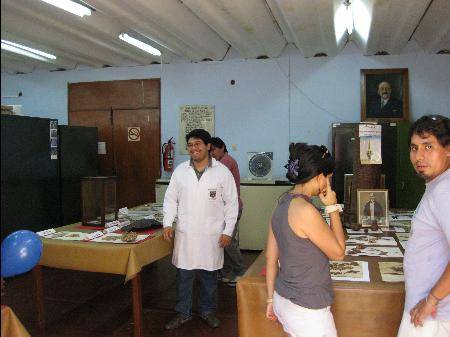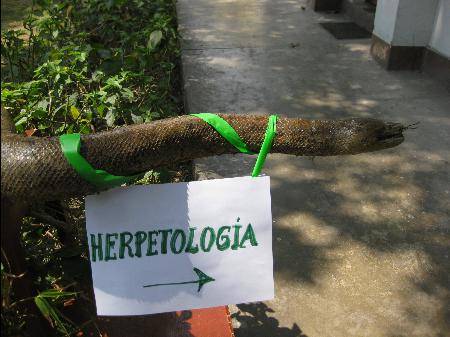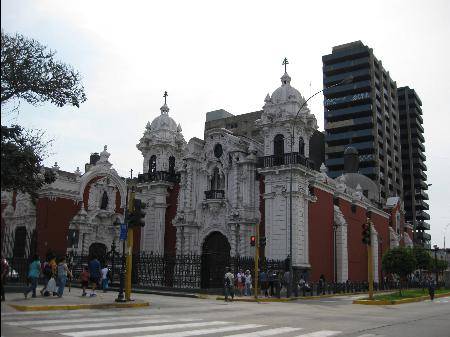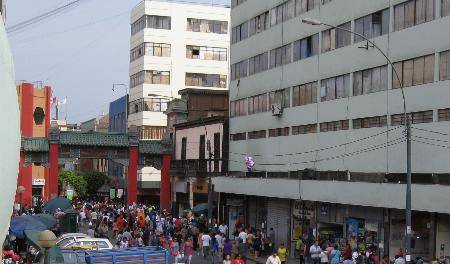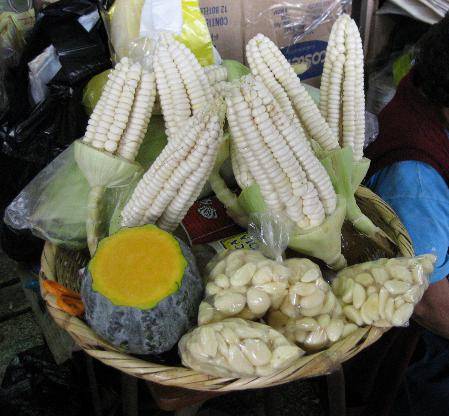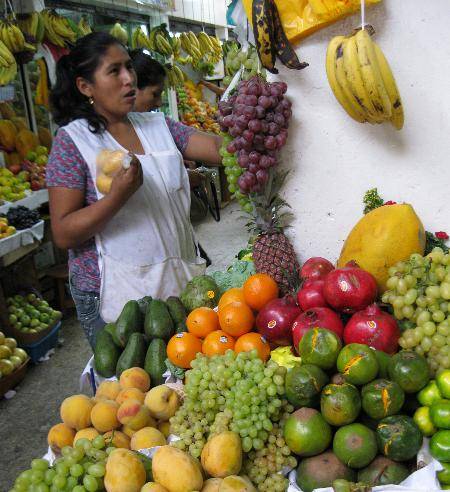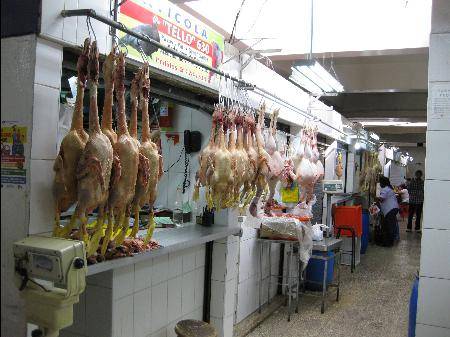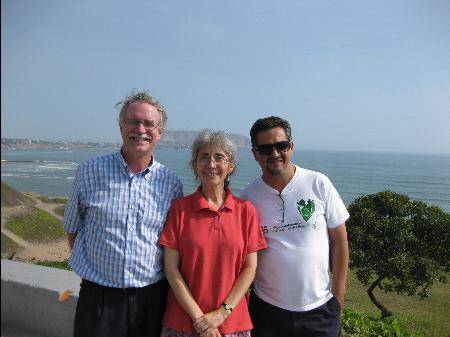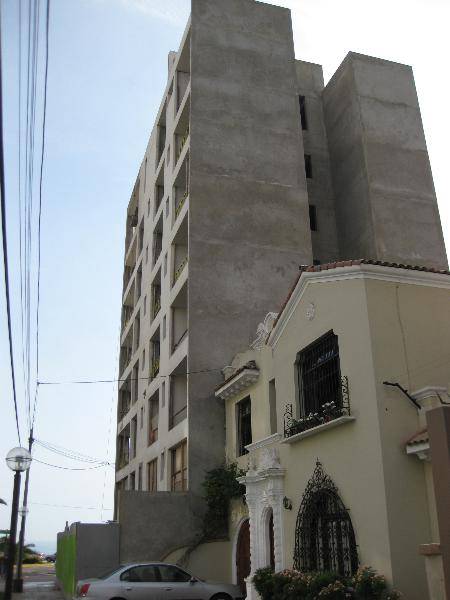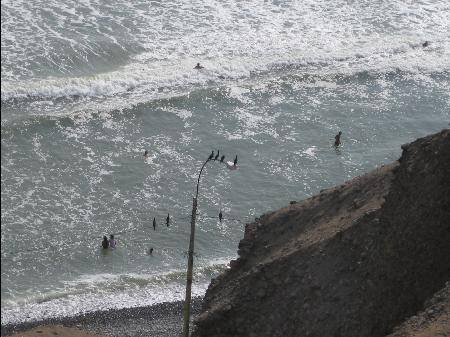In the bad old days, biologists from places like the Museum would just go to a country, collect and then bring everything home. This was great for building our collections, but bad for the country involved. It didn’t help build up capacity in-country for biological inventory and understanding at all; many of the places the early explorers went were only just beginning to develop academic communities of their own. Things are different now though – and for the better.
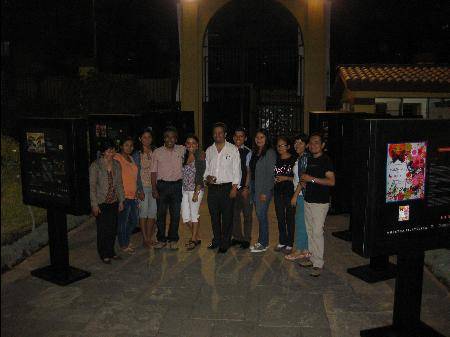 My colleague Asunción Cano and his some of his students at the meeting of the Peruvian Botanical Society – academic life is certainly vibrant in Perú!
My colleague Asunción Cano and his some of his students at the meeting of the Peruvian Botanical Society – academic life is certainly vibrant in Perú!
The Convention on Biological Diversity that was negotiated by the world’s governments in 1992 and subsequently ratified by most countries has meant, among other things, that permission to collect in countries not your own must be sought from the relevant authorities. This might seem like a bit of a pain – but what it does is gets you in contact with local scientists and tends to lead to some great collaborations! In Peru we have our research and collecting permits for both of our projects from the Dirección Forestal y de Fauna Silvestre of the Ministerio de Agricultura y de Rienda (Ministry of Agriculture and Water). The process is very straightforward; it involves a project plan, a list of people involved, and a promise to leave half the collected material in Peru. Sensible.
DNA permits - a different beast
For much of our work, however, we want to use DNA sequence data to look at evolutionary relationships for both the plants and the insects. This means we need a different and additional permit – a permit for use of genetic resources. All DNA has been identified as 'genetic resource' regardless of use. In a way this has created a huge problem for evolutionary biologists like us. Our use of DNA data has been equated with the plant samples kept in gene banks. So genetic resources permits can be notoriously difficult to negotiate and obtain.
We submitted our application of the DNA extraction from all Solanaceae and all insects associated with them in early December of last year, made some corrections based on observations from the people in the Ministry, and to my amazement and total surprise we were granted permission to extract DNA from specimens of Solanaceae and their associated insects we collect in Peru for evolutionary analysis! I signed a contract with the Ministry affirming each other’s rights and responsibilities in Lima, then headed for the mountains to join the team.
We really appreciate the efforts our colleagues at the Museo in Lima have made to help guide all these permissions through the system, and the efforts our colleagues at the Ministry have made to allow the genetic resources permit to be granted. I am really excited about the future collaborations we will have, and the new data and hypotheses we can generate. Doing all the permissions the right way has taken time, but I feel it has us all on a good solid, collaborative base for developing the research in the future.
Off into the field
The next day off I went to join the rest of the team – Erica, Mindy, Dan and Paul had gone to Canta the same day I had to stay in Lima to sign the genetic resources contract – so I followed by public transport, always exciting in Peru.
The car I got a seat in was old, bottomed out at every bump in the dirt road, and had a completely cracked windscreen. I might know why… the road from Lima to Canta was being repaired and widened in a number of places so there were lots of stops – at one of them several men were up the side of the hill pushing rocks down with sticks – no dynamite here, just manpower!
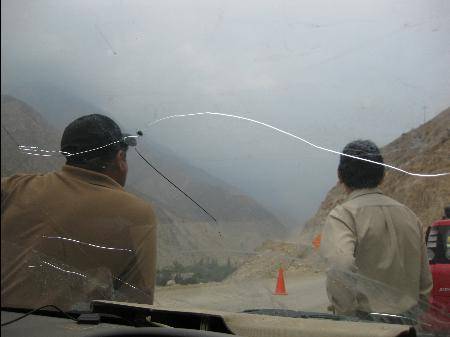 I suspect the windscreen has taken a few knocks along the way … our driver and the one from the car in front discussing the delays.
I suspect the windscreen has taken a few knocks along the way … our driver and the one from the car in front discussing the delays.
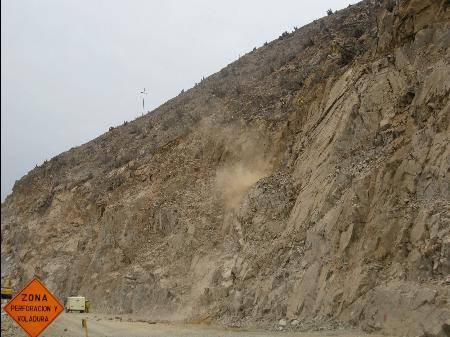 If you squint you can see the tiny men on the slope – they are pushing the slope down with sticks, levering rocks out so the roll down the hill in clouds of dust…
If you squint you can see the tiny men on the slope – they are pushing the slope down with sticks, levering rocks out so the roll down the hill in clouds of dust…
The driver of our 'colectivo' got a bit impatient, and zoomed through – despite rocks skittering down the slope. Not great. But we made it to Canta, I found the team, whose day had been Solanum-filled and wonderful. I can’t wait to go out tomorrow!!
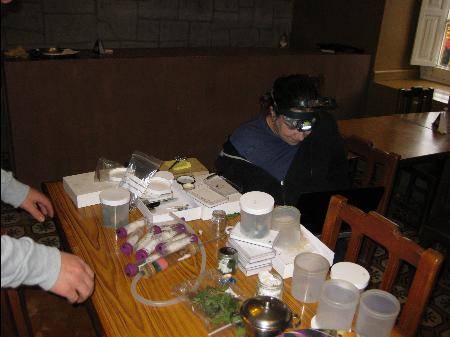 Erica (with Dan’s hands) sorting some of the day’s catch – it’s looking good!
Erica (with Dan’s hands) sorting some of the day’s catch – it’s looking good!
Posted on behalf of Sandy Knapp, Museum botanist on a research and collecting trip to Peru.



